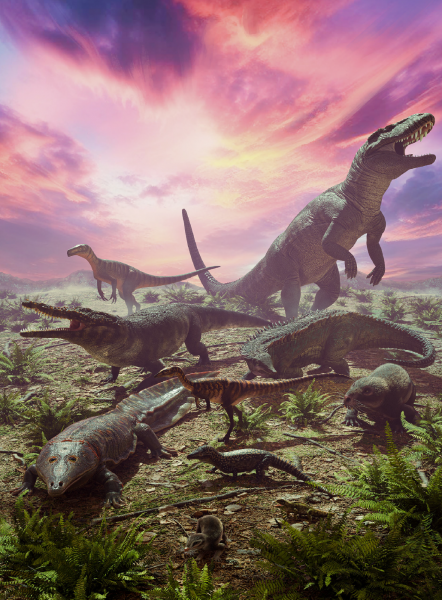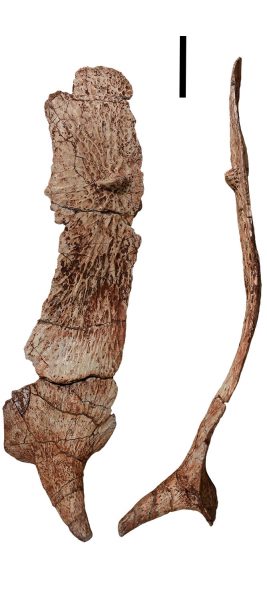Prehistoric ‘Suit of Armor’ Helps Identify New Species of Dinosaur Ancestor
December 8, 2024


Dinosaurs get all the glory. But aetosaurs, a heavily armored cousin of modern crocodiles, ruled the world before dinosaurs did.
These tanks of the Triassic were covered from head to toe in armor plates, and they came in a variety of shapes and sizes before going extinct about 200 million years ago. Today, their fossils are found on every continent except Antarctica and Australia — but full suits of armor from aetosaurs are rare.
That makes a new species of aetosaur identified by William Reyes, a doctoral student in the Department of Earth and Planetary Sciences, all the more exciting. The research focused on a specimen that has about 70% of its armor, with plates from each major region of the body.
“We have elements from the back of the neck and shoulder region all the way to the tip of the tail,” said Reyes. “Usually, you find very limited material.”
Reyes named the aetosaur Garzapelta muelleri. “Garza” recognizes Garza County in northwest Texas, where the aetosaur was found more than 30 years ago. “Pelta” is Latin for shield, a nod to aetosaurs’ heavily fortified body. The species name “muelleri” honors the paleontologist who discovered the fossil, Bill Mueller.
Reyes said that Garzapelta, which lived about 215 million years ago, would have resembled a modern American crocodile — but with much more armor.
“Take a crocodile from modern day and turn it into an armadillo,” he said.
The results were published in The Anatomical Record.
Back to the Newsletter